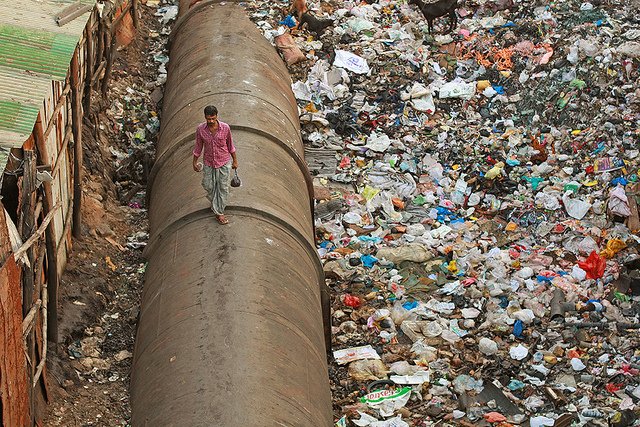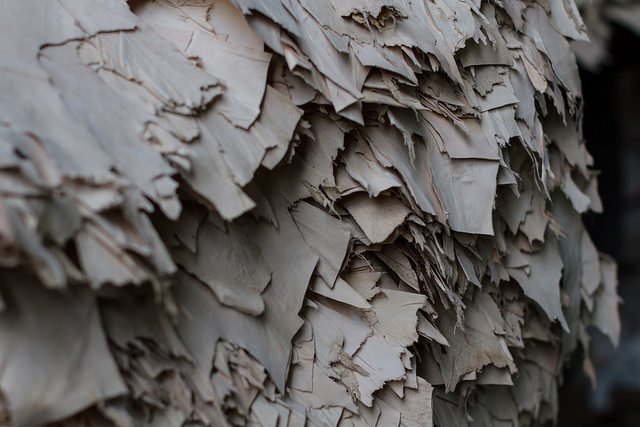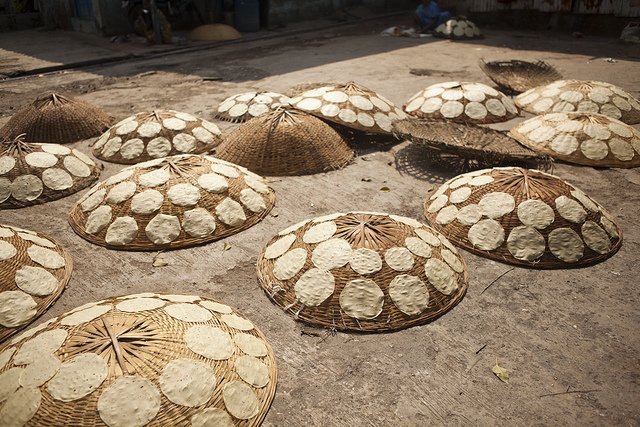When you first encounter Dharavi, one of the largest slums in Mumbai, India, it can feel overwhelming. Dark, narrow passageways maze through small shanty-like structures. Children run barfoot through puddles strewn with garbage. Chemical-laden fumes and particle-filled air fills your nose and lungs.
But inside the square-mile slum, made famous in the movie "Slumdog Millionaire," is a bustling micro-economy filled with industry and commerce that generates some $665 million per year, according to Reality Gives, a non-profit that runs tours of Dharavi and uses the money to run community centers and classes for its 1 million residents. The workers and residents of Dharavi export leather goods, suitcases, baked goods, textiles, stoves, and an array of other products into the broader Indian economy.
The poverty in Dharavi is very real: When I visited, I saw many crafters who make only 100 to 300 rupees per day, or about $1.50 to $4.50 per day. There are very few bathrooms — 1000 toilets for 1 million residents, according to Reality Gives — as well as open sewers that can lead to contaminated water. It is among the poorest areas in a nation struggling with 21% poverty and staggering sanitation challenges, two problems that are the focus of the Global Citizen India Festival in Mumbai on Nov. 19.
Read More: How Joining APEC Could Help India Eradicate Extreme Poverty
But in spite of the poverty, Dharavi is a thriving city unto itself. Here are five industries that help the residents of Dharavi make a living and help the world to become a greener, more sustainable place.

1. Plastic Recycling
In Dharavi's industrial district (separate from the more residential neighborhoods), men break down plastic, sort it, wash it, dry it, and turn it into small plastic pellets that are then shipped to plastics manufacturers to create new plastic products, including the jewelry made elsewhere in the slum. The materials are brought to Dharavi from pickers all over Mumbai who find scraps of plastic to sell. More than 80% of the city's plastic waste is recycled, according to Reality Gives.

2. Aluminum Recyling
The workers in Dharavi also recycle metal, taking old car parts and paint cans and cleaning them, crushing them, and then reselling them to metal manufacturers. Along the narrow lanes and shanties that make up Dharavi, sparks fly as welders use some of the metal to create new machines that will help crush the raw aluminum, and elsewhere in the slum, the recycled metal is turned into car engines by workers in other workshops. Some of the workers sleep in the shops at night so that they can save their wages for when they return home to rural areas, according to Reality Gives.
Read More: India’s Ambitious Mission: A New, Sustainable, 'Smart' City by 2019

3. Pottery
Generations of potters have crafted ceramic bowls and vases in the Kumbharwada section of Dharavi, using scraps of clothing from the slum's textile industry to create slow-burning furnaces in which to dry their clay pots. In Kumbharwada, who were the first people to live in Dharavi when the area was founded in 1882, families have slightly larger houses, and teach their children the craft of hand-spinning pottery. The finished products are shipped and sold widely across the country.

4. Leather Goods
In another part of Dharavi, craftsmen take the skins of sheep and goats and water buffalo and turn them into leather. The small workrooms house piles and piles of animal skins, washed over spinning wheels and hung to dry over the narrow lanes. They are then imprinted with patterns resembling other animals like snakes and crocodiles and turned into an array of leather goods including wallets and purses. Some are sold under the brand name "Dharavi" while others make their way as fake designer bags into markets around Mumbai, where they are sold next to suitcases and luggage made elsewhere in the neighborhood.

5. Papadom & Baked Goods
Women can earn about 100 rupees per day for making papadum, the light crispy snack served with meals across India, according to Reality Gives. They can do the work from home, sitting on the floors of their apartments mixing and rolling dough, pressing it into small thin circles, and laying it to dry on top of woven baskets made by other residents. The dried papadum are then packaged up and delivered to restaurants and grocery stores, where individuals can then fry them in oil to eat with chutneys.
In bigger industrial kitchens in Dharavi, men combine flour and ghee, India's clarified butter, to create tons of pastry dough per day that they bake into khari biscuits, common accompaniements to tea at breakfast in India.